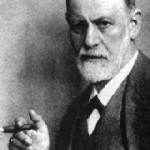Mensches with MDs
 by Danielle Ofri
by Danielle Ofri
The Lancet
All religions have weighed in on the thorny ethical contr oversy of when life begins. In the Jewish faith, however, there is consensus: the embryo is only viable once it graduates medical school.
What is it with Jews and medicine? An engaging exhibition at the Yeshiva University Museum seeks to find out. The title, Trail of the Magic Bullet, comes from the work of Paul Ehrlich who received the Nobel Prize in 1908 for his immunological theory of the magic bullet. Ehrlich developed the first cure for syphilis, but his name was later expunged from textbooks by the Nazis.
Much of Judaism’s approach to medicine is informed by the Talmudic saying that saving a single life is akin to saving the world. Judaism sees itself as a practical religion, and its grappling with the nitty-gritty of daily life may explain why many of its adherents were drawn to medicine. The exhibition displays rabbinic writings from the 1700s and 1800s on abortion, end-of-life care, autopsy, organ donation, and vaccination.
There is an acceptance from the sages that life is more nuanced than black-and-white biblical edicts. So while Jewish law prohibits desecration of the dead, autopsy is permitted if it will save the life of a sick person. Abortion is allowed if there is a threat to the mother’s life or health, including emotional health.
The Catholic religion, incidentally, was also practical. Despite the prohibition on Jewish doctors treating Gentiles, papal dispensations cropped up reliably for popes to employ Jewish personal physicians for themselves.
Jewish community organisations from Palestine to the Lower East Side embraced medical advancements, promoting breastfeeding, milk for young children, vaccination, and sanitation. These groups—such as New York’s Visiting Nurse Service—explicitly affirmed that their services were for all, irrespective of religion.
Similarly, the Jewish hospitals that arose like a wave in the mid-19th century were open to all, although they were created to offer amenities not available elsewhere—kosher food, Jewish chaplaincy, freedom from Christian proselytisation. They also provided jobs for Jewish doctors and nurses who faced discrimination elsewhere.
Discrimination is a subtheme of the exhibition. Jewish immigrants flocked to American medical schools in the early 20th century—in 1920, 47% of Columbia University’s medical class was Jewish. But unofficial quotas quickly arose. By 1938, only 4% of Columbia’s students were Jewish. In one of the rare documented quotes, the dean at Yale instructed his admissions committee: “Never admit more than five Jews; take only two Italian Catholics, and take no blacks at all.â€
In prewar Europe, Jews were singularly prominent in medicine: 50% of doctors in Berlin were Jewish; 70% in Warsaw. The Nazis saw to that, of course. Rather than help their besieged colleagues, medical boards worldwide erected barriers to prevent foreign competition.
Arthur Dzialoszynski—a recipient of the Iron Cross from the German Government for heroic service in World War 1—tried desperately to escape Nazi Germany. The exhibit displays crisply worded letters of rejection from medical boards in Canada, Australia, England, and Tasmania.
American medical schools—shamed by the Holocaust, influenced by the civil rights movement—finally dropped their quotas and Jews again took to medicine in numbers that vastly over-represented their proportion of the population. Jewish matrons could once again boast of “my son, the cardiologistâ€.
      Trail of the Magic Bullet is an intriguing examination of how one social group has interacted with medicine. The exhibit is broadly enough based to appeal to a wider audience because of its illuminating historical observations.   (from the Lancet)
Â
